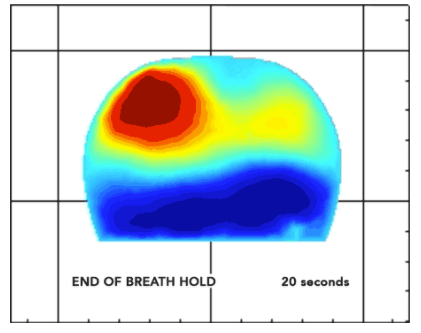
Researchers at Columbia found that analysing the increase and decrease in blood concentrations inside a tumour could help them determine which patients would respond to chemotherapy (Credit: Andreas Hielscher/Columbia Engineering)
The method, which uses red and near-infrared light, measures the blood flow dynamics in the breasts of women undergoing neoadjuvant chemotherapy. This type of treatment is generally given to women newly diagnosed with invasive, but operable, breast cancer for five or six months before they undergo surgery. Women who have a complete response – where the chemo eliminates all active cancer cells – have a lower chance of cancer recurrence.
“Patients who respond to neoadjuvant chemotherapy have better outcomes than those who do not, so determining early in treatment who is going to be more likely to have a complete response is important,” said study co-leader Dawn Hershman, MD, head of the Breast Cancer Programme at the Herbert Irving Comprehensive Cancer Centre.
“If we know early that a patient is not going to respond to the treatment they are getting, it may be possible to change treatment and avoid side effects.”
Chemotherapy drugs kill cancer cells, but they also affect the vasculature inside the tumour. The team believed it might be possible to pick up optical clues of these vascular changes, since blood is a strong absorber of light. Using the optical tomographic system to generates 3D images of both breasts simultaneously, the researchers could examine blood flow, vasculature changes, and see how the blood interacts with the tumour.
Analysing data from 34 patients between June 2011 and March 2016, blood outflow was used to correctly identify responders in 92.3 per cent of patients, while the initial increase of blood concentration inside the tumour was used to identify non-responders in 90.5 per cent of patients. The study appears in the journal Radiology.
“There is currently no method that can predict treatment outcome of chemotherapy early on in treatment, so this is a major advance,” said study co-leader Andreas Hielscher, professor of biomedical engineering and electrical engineering at Columbia Engineering and professor of radiology at Columbia University Irving Medical Centre.
“This helps us distinguish malignant from healthy tissue and tells us how the tumour is responding to chemotherapy earlier than other imaging techniques can.”
A wider clinical trial of the imaging system is set to be conducted, but the study authors are hopeful that commercialisation of the technology could take place within the next three to five years.
“If we can confirm these results in the larger study that we are planning to begin soon, this imaging system may allow us to personalise breast cancer treatment and offer the treatment that is most likely to benefit individual patients,” said Hershman.




April 1886: the Brunkebergs tunnel
First ever example of a ground source heat pump?